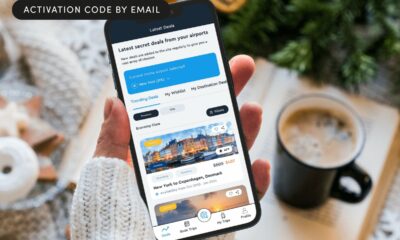MARKETING
Is Internal Recruitment Good for Business?

During my days as a journalist, I saw many different forms of recruitment take place. It was common to see reporters and photographers recruited from all over the country to work with the team.
It was also common to see employees move to different positions internally. A reporter could go from reporting outside to producing a show in-house. Associate producers could rise in rank and become executive producers.
This type of internal recruitment isn’t common only in newsrooms. Many companies recruit from their current roster of employers rather than recruit externally. Internal recruitment is often faster and less time consuming. On average, the cost to hire someone is about $4,000, according to SmartRecruiters, but hiring internally can cost much less.
With that in mind, you may wonder if internal recruitment is the right move for your business. Here’s everything you need to know:
Internal vs External Recruitment
Internal recruitment means choosing a current employee to fill a position or role. External recruitment occurs when a company is looking for candidates who are not currently employed by the company.
The internal hire might be from a different department within the company or have a different job title on the same team. This new role could be a promotion in which there is more responsibility and a higher salary. If not a promotion, the change could be a lateral move in which the employee maintains the same level of seniority but may not see a change in compensation.
A company may choose to open job postings only to internal applicants or it may do so before opening the posting to external candidates. This can save time and money — and also ensures folks within your organization have a shot at the upward mobility they desire.
In other cases, internal candidates can apply for the open position, but recruitment efforts may focus on external candidates. This may be because of a lack of interest in the posting among current employees or because the desired skill set doesn’t exist internally.
4 Internal Recruitment Methods
1. Promotions
As mentioned before, a promotion entails moving an employee into a higher position of seniority in which they’re given more responsibility and a higher salary. For example, when the lead news director at my newsroom took a job elsewhere, the assistant news director was recruited internally to take over the role.
2. Transfer
A transfer is when an employee remains within the company but moves to another location. For example, the station I once worked for was owned by a company called TEGNA. TEGNA owned multiple televisions across the country, and it was common for journalists from my station to transfer to other TEGNA stations in a different city or state while still maintaining their same role.
Transfers are often the result of a change in business needs or the employee’s desire to make a change, such as working closer to family or living in their desired climate.
3. Reorganization
It’s normal for businesses to grow, shift priorities, or merge with other entities. In these cases, reorganization might occur. It can take the form of employees being shifted to other teams or leadership taking on less administrative duties and working directly with employees to keep up with increased demands.
An example of reorganization happened back in 2017 when Dow Jones announced that its flagship publication, The Wall Street Journal, would be reorganized to shift its focus away from print and into a digital strategy. New jobs were created and employees were re-allocated into new roles that were focused on the publications digital presence and goals.
4. Role Change
Usually, a role change is not a promotion. In this case, an employee may be recruited laterally, meaning they maintain the same level of authority but are operating in a different role.
This is a great solution if an employee is showing skills and interests outside of their current role. An example of this occurred when a television producer at my former TV station showed immense talent for creating content for the station’s website and social media. When a digital producing role opened up, that television producer was selected and a lateral move was made from television producer to digital producer.
Legal Implications
Regardless of the method of internal recruitment used, employers must create a policy that is fair and equitable for internal applicants, according to the Society of Human Resource Management.
In this policy, clear expectations must be established for employees who wish to apply. These expectations must be implemented consistently and communicated effectively throughout the company.
It’s also important to remember that federal laws prohibit employment discrimination based on:
- Age
- Citizenship
- Disability
- Family and/or medical leave use
- Genetic information
- Military service
- National origin
- Pregnancy
- Race
- Religion
- Sex, gender identity, and/or sexual orientation
3 Advantages of Internal Recruitment
1. Talent Retention
Hiring within your company can send a message to your employees that there are clear opportunities for advancement. This can motivate your best employees to stay long term because their hard work will pay off.
2. Cost Effectiveness
Often, the benefits of hiring externally cannot outweigh those of hiring from your current pool of employees. That’s because internal recruitment eliminates costly job board fees, time-consuming rounds of interviews, and pricey background checks.
3. Shorter Learning Curve
Chances are that whoever you hire internally will already have a solid understanding of the company’s culture, practices, and processes, thus lessening the time it would take to get acclimated to a new role.
3 Disadvantages of Internal Recruitment
1. Workforce Gap
When a position is filled internally, you’re moving an employee from one role to another. This effectively closes one gap but creates another that needs to be filled.
2. Stagnation
One of the perks of recruiting externally is that employees from outside the company can bring unique perspectives and innovative processes to propel the company forward.
This can be the opposite for internal hires who are likely to work using the same processes and ideas they’ve been using throughout their time in the company. Lack of fresh approaches and ideas can create stagnation in the workplace and can put the business behind competitors.
3. Lack of Skills
With internal recruitment, there is a chance your current roster of employees may not have the right set of skills for the position you’re looking to fill. And while internal hires typically require less training than external hires, you may run the risk of spending more time and money training the internal hire if they don’t possess all the qualities to succeed in their new role.
In those cases, it would be better to recruit externally to find a candidate who already has the necessary skills from previous experience.
So, is internal recruitment right for your business?
Ultimately, there are many factors that determine whether internal recruitment is the right choice over external recruitment. If your company has a position to be filled and you have one or more employees who could be successful candidates, then recruiting internally could be a timely and cost effective choice. However, if your employees do not currently seem to be the right fit, or you’re concerned about limiting your candidate pool, then it wouldn’t hurt to expand to external recruiting.
Source link


















You must be logged in to post a comment Login